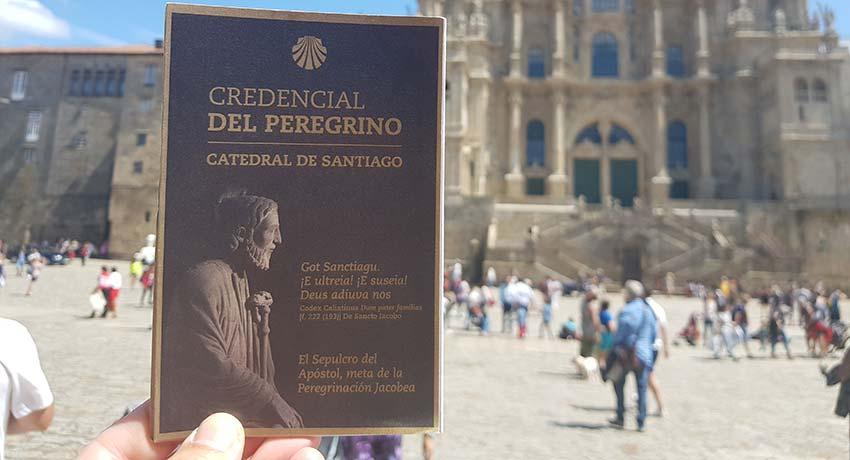Walking el Camino
Who walks the Camino de Santiago?
People from every nationality, every age and every religion walk the Camino. The statistics from 2019 from the Camino Pilgrim Office show that over 300,000 people from all over the world walked the route, 20,000 of them American.
About 55% of pilgrims chose the French Camino and most of them chose to walk the last 100Km from Sarria. The second most popular Camino walk was the Portuguese Camino favored by 20% of walkers.
The appeal of the Camino has become universal, and as more people learn about the way, its popularity will only increase.
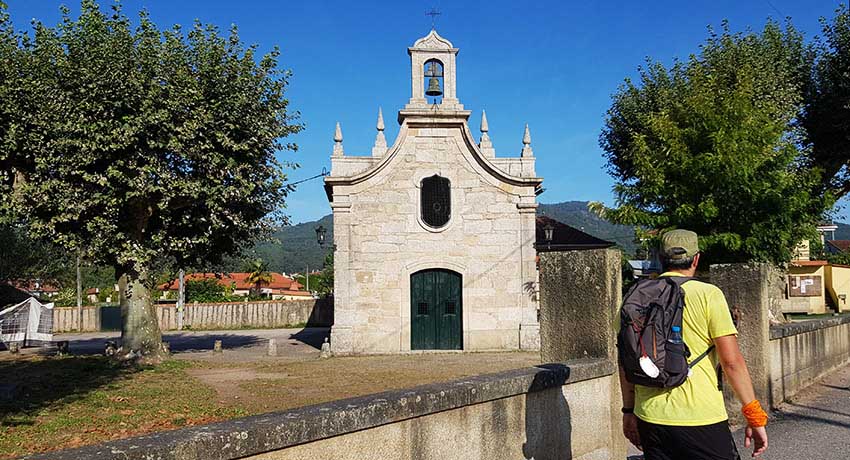
What is the Camino de Santiago?
The Camino de Santiago is a series of interconnected walking camino routes in Northern Spain that pilgrims have been following for more than 1,000 years.
Ending at the tomb of St. James in the city of Santiago de Compostela, the Camino remains one of the only authentic pilgrimages seemingly untouched by modern influences.
Walking the Camino de Santiago is an ancient tradition whose historical origins date back to the early 10th Century. Today, thousands of people walk the Camino from all over the world, making the experience more than just a walking trip. From the beauty of the landscapes to the simplicity of the journey, walking the Camino has become an experience of a lifetime.
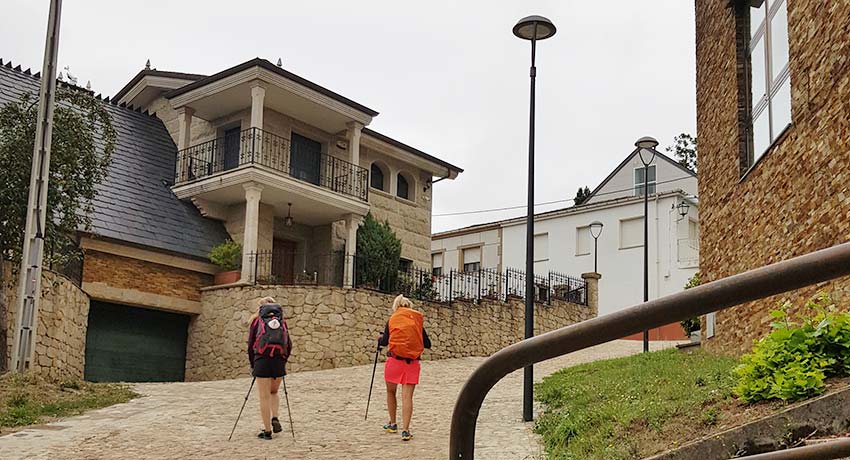
Where does the Camino begin?
There is no official starting point on the Camino. There are many Camino routes and different ways to reach the city of Santiago. One of the most popular routes is the French Camino, that begins in the city of St. Jean Pied de Port on the France/Spain border and crosses over the Pyrenees mountains.
Many people don’t have either the time or energy to walk the whole 450 miles of the French Camino, which takes approximately 40 days, so they will just walk the last 100km from Sarria or pick a starting city which will allow them to walk to Santiago with the time they have.
What are the different Camino routes?
The Camino offers a wide array of walking routes across Spain. From walking along the coast, to large flat plains, choosing a route that fits your fitness level, desired experience and time constraints is important.
It is also important to note that when choosing your route that you do not need to start at the perceived “beginning” of the route and that you can skip certain parts if you like. The only requirement for receiving the Compostela official certificate is that you walk at least 100km and you end in the city of Santiago.

French Camino
The complete French Camino is 492 miles long (791 Km) and takes the walker over the Pyrenees mountains, through important Spanish cities such as Pamplona and Leon and can be a particularly challenging hike at times.
This is the most popular route and is great for the traveler who wants to experience a classic pilgrimage. Many walkers who want to experience the French Camino but do not have 40 days to spend away from home, choose to walk from different cities along the route.
Sarria-Santiago
The last 100km of the French route begins in the town of Sarria and is a very popular starting point for time-restricted or first-time Camino walkers. The popularity of walking this Camino is the sheer beauty of the walk and the numerous amenities available. Walkers can find small cafes, comfortable hotels, and lots of restaurants in each stage on this route.
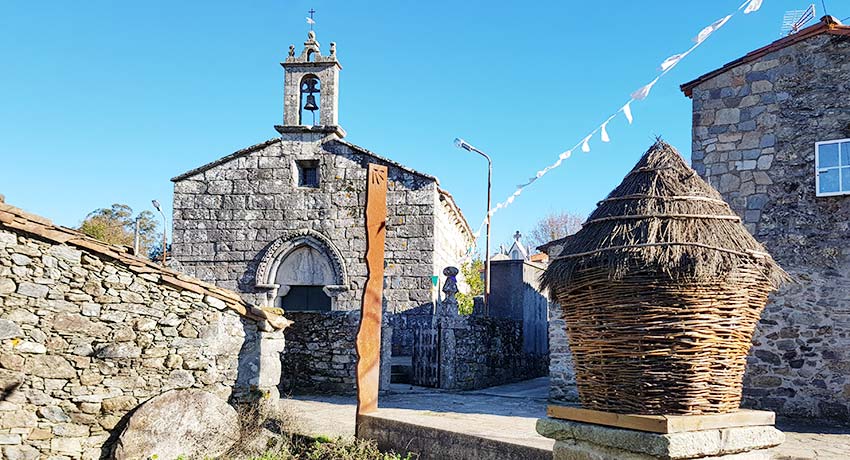
This Camino is normally broken down into 5 or 6 walking days and pilgrims walk through forests, small villages and green Galician landscapes. While it is a little hilly in some parts, this mostly flat stretch of the French Camino is considered one of the easiest routes to take.
O Cebreiro-Santiago
Another popular French Camino starts in the Spanish city of O Cebreiro. Known for its straw roof houses (pallozas), O Cebreiro is located on the Galicia border, about 95 miles (150Km) from Santiago. It is also known for one of the most famous miracles along the Camino.
This section of the French route will have you descend from the mountains from the highest point of the Camino in Galicia, through beautiful landscapes and fertile valleys to the city of Santiago.
You will have the opportunity to visit sights along the way like the Benedictine Monastery of Samos. This route from O Cebreiro is excellent for those willing to explore the French Camino beyond the last 100Km.
Portuguese Camino
The Portuguese Camino is the second most popular route for pilgrims. Starting as far away as Lisbon, this route is 634km (393 miles) long and takes the walker through small Portuguese towns, along the coast and eventually crossing the Portugal/Spain border and arriving in Santiago. The complete route takes about 40 days and has good accommodations and amenities along the way.
Tui-Santiago
The Portuguese Camino from Tui starts in a city located on the border between Spain and Portugal, just across the Minho river. Medieval bridges, the historical old town of Pontevedra and the village of Padrón, famous for its peppers, are some of the interesting sights you will find along the way.
This section of the Portuguese Camino will take you through green landscapes up the hills and down the valleys into a region well-known for its Albariño wines, an excellent way to explore the last 100Km of the Portuguese Camino.
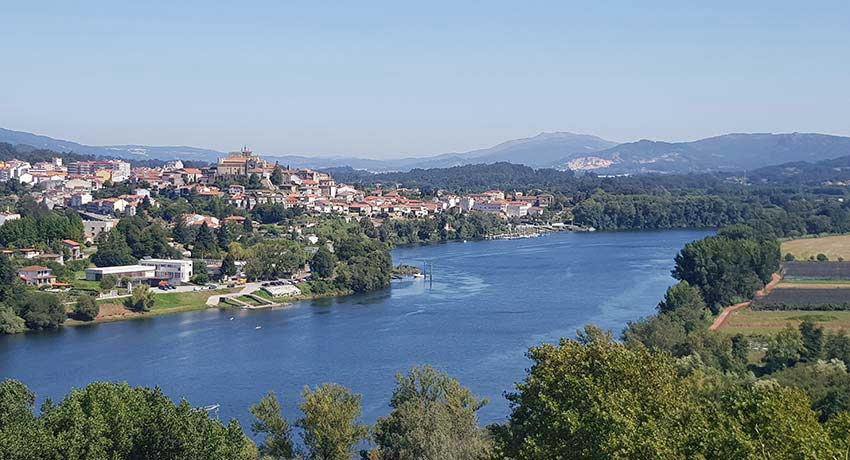
Portuguese Coastal Camino
The Portuguese coastal camino is a variation of the Portuguese route that proceeds along the coast, all the way from Porto to Santiago de Compostela, for a total of 155 miles.
Porto to Santiago
The section of the Portuguese Coast Camino from Porto to Santiago will take you through quaint villages like Povoa de Varzim and Viana do Castelo while you enjoy majestic views of the Atlantic Coast and delicious fresh seafood available in the villages.
The route follows the Atlantic Ocean along amazing beaches and across Portuguese and Spanish historical towns to Santiago de Compostela's famous Cathedral.
Vigo - Santiago
The second section of the Portuguese coastal Camino from Vigo is well known for its interior views and impressive scenery that leads you to Santiago.
An ideal route for seafood lovers as they will be able to enjoy the great selection along the many coastal towns. It takes approximately 7 walking days to walk the last 100 Km and it is a fantastic way to explore the Camino.
Camino del Norte
The Northern Camino begins in the city of San Sebastian, famous for tapas, and takes pilgrims 840km (521 miles) walking along the Northern Coast of Spain. Many choose this Camino for the challenge and the stunning greenery that the north of Spain is known for.
A route less traveled than the French and Portuguese Caminos, the Camino del Norte or Northern Camino is an impressive journey, ideal for those that have walked other Caminos or are looking for a different challenge.
Besides enjoying your walk, don't forget to take the time to enjoy delicious local dishes like bacalao al pil-pil (cod) and the large variety of pintxos (tapas) available, while you taste some of the local txakoli wine. Best way to recover from your Camino efforts!
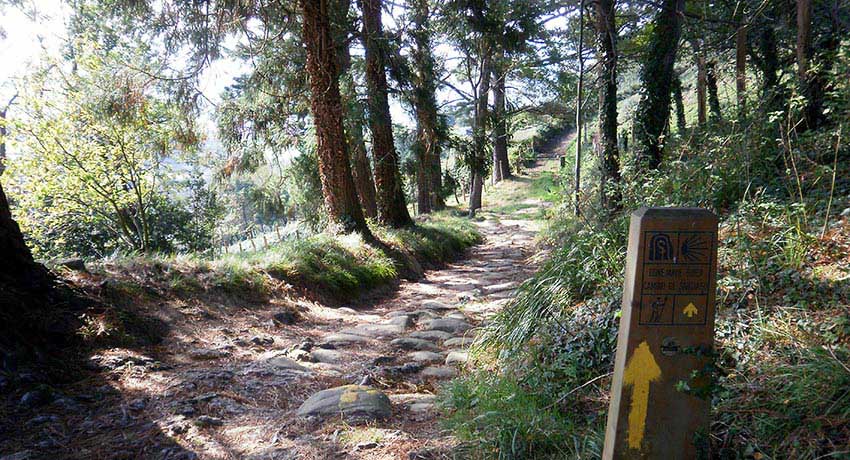
San Sebastian-Bilbao
For those that do not wish to walk the whole route, you can walk the Camino del Norte from San Sebastian to Bilbao. This section of the Northern Camino connects the two most important cities in the Basque Country, known for its fantastic food and impressive landscapes.
This route will have you traveling along picturesque fishing villages on the Cantabric seashore and also through beautiful interior mountain landscapes and fertile valleys. Unlike some of the other Caminos, it is physically more demanding as you will have to negotiate slopes into the mountains.
Other Routes
If you would like to explore other options, check out this map of the Camino routes in the Iberian Peninsula (Spain and Portugal) that start from places as far South as Seville, all the way to the coast of Alicante.
El Camino transcends Spain as people in the old times would just start walking towards Santiago from the front doors of their homes in Europe.
Pilgrims would come from all over: Italy, France, or anywhere in Spain and you could start almost anywhere in Europe. You can still see the roads marked with the famous scallop shell that identifies the Camino routes to this day.
And remember, you don’t have to walk on consecutive days, or even consecutive years! You could start the Camino, walk part of it (keep your pilgrim’s passport - see below), and then pick up where you left off at another time. There are numerous travelers, especially Europeans, who choose this way to walk, and just walk a week here and there when they have the time.
How do I get to the Camino?
If you are coming from the US, you will have to fly into a major international airport. If you’re doing a French or Spanish Camino, fly into Madrid or Barcelona. If you’re walking a Portuguese Camino, fly into Porto or Lisbon.
From your international arrival airport, you can fly into Santiago de Compostela and then take a bus, taxi or transfer to your starting city.
You can take a train to Santiago, Leon, Pamplona, or another city near your starting point and then transfer from there. There are also private transfers and buses to help you make your way to your starting point. Check here for help if you are planning your journey using public transportation.
What are my options for lodging?
There are 3 main options for accommodations when walking the Camino: albergues, casas rurales and hotels. Accommodations are probably the most difficult/frustrating part of the Camino because with the Camino’s popularity, people begin reserving spaces almost a year in advance.
Some of the smaller towns only have a few rooms available, so it is important to plan ahead if wanting to walk the Camino on a specific date.
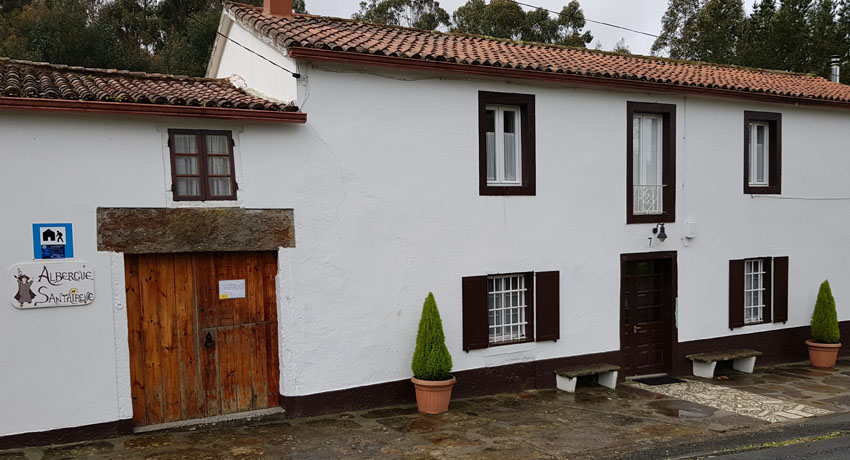
Albergues are the Spanish equivalent of hostels but modified specifically for the Camino. Albergues consist of large rooms filled with bunk beds, sleeping anywhere from 8-50 people in a single room. There are communal showers, a communal kitchen, and a place to store your pack. Albergues cannot be reserved ahead of time and often reach capacity by 1 or 2pm each day.
Pilgrims must have a Camino passport to stay in public albergues and can only stay one night.
The plus side of this type of accommodation is that it’s extremely cheap, maybe 5-10 € a night. Many people choose this option because it adds to the sense of adventure and they enjoy the camaraderie of lots of people.
But the downside is that you’ll be sleeping next to a large number of people, possibly snoring or bothering you while you try to rest, and if the albergue is full when you arrive you have to either continue walking to another stage or try and find private accommodations.
You will also need to bring bedding for the Albergue, such as a sleeping bag and pillow. Albergues are only open during the main walking times on the Camino (March-October) and many will close for the winter. If you’re young and adventurous, this might be a good option for you.
Casas Rurales, or rural houses, are bed-and-breakfast type accommodations that often can only hold a few pilgrims at a time (4-20). These charming houses are usually very traditional stone or brick Spanish buildings and can be a little distance off the Camino path or not on a main rest stage on the Camino.
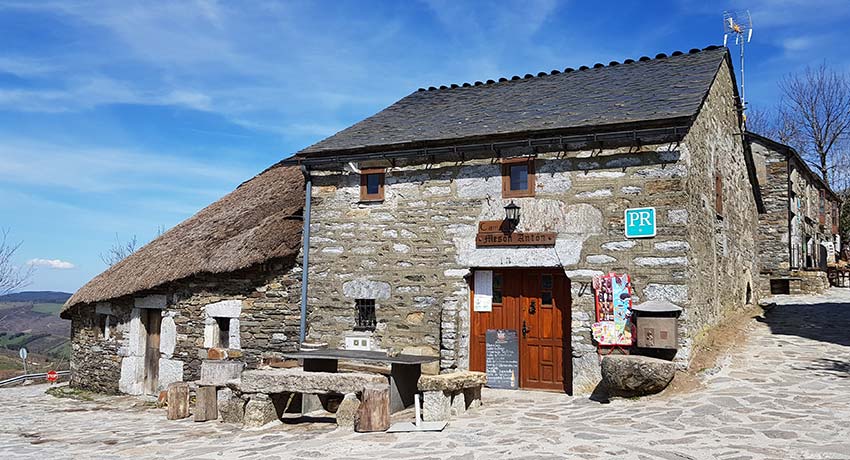
Rooms can be like a hotel with an individual bathroom, or a few rooms can share a bathroom located down the hallway.
Many casas rurales cannot be booked online and must be booked on the phone or through a Camino travel company.
Owners of these properties take pride in their accommodations that often have a garden and offer many family-friendly amenities. Prices can run 40-150€ a night, but offer the charm of an authentic Spanish experience.
Hotels can be found along the Camino in the main stages and larger cities. There are no chain hotels, like a Holiday Inn, but hotels are privately owned and operated. Hotels usually can fit 2, maybe 3, guests per room and have en-suite bathrooms.
Hotels almost always have restaurants onsite and that is convenient when you want to eat something earlier, have them pack a picnic lunch for the next day or provide breakfast.
Hotels must be booked in advance and they fill up quickly, especially during the popular months. Hotels can range in price and quality, anywhere from 75-150 € a night.

What is a Pilgrim’s Passport or Credential?
A pilgrim’s passport, or credential, is a little booklet you will need to carry on your trip. You can ask your travel provider for it before you start your trip or you can procure it at some of the villages. Inside are blank squares and as you walk, you must have your booklet stamped at different cities to prove the distance you walked.
The stamps on your passport are unique to each place and as pilgrims fill up their book, it’s a great keepsake and souvenir.
Hotels, restaurants, churches, stores, cafes, bars… most everyone has a stamp. The word for stamp in Spanish is sello (pronounced "say-yo") and many times as you walk into a place, you’ll see one by the door and you stamp it yourself. Other times just say sello and the person working will stamp it for you.
When finished with your Camino you take your booklet to the pilgrim office in Santiago and they will give you a certificate of completion (and return your pilgrim’s passport).
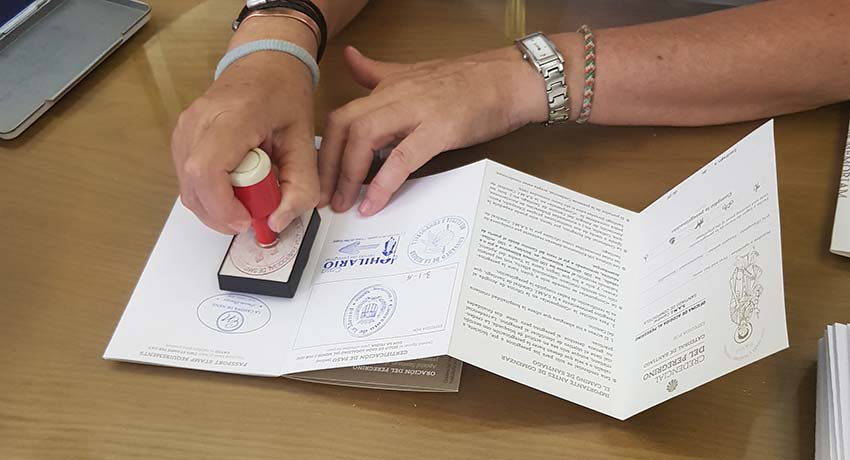
What are the Certificate of Distance and the Compostela?
A certificate of distance and the Compostela are documents that acknowledge the completion of the Camino. In order to be eligible, you must complete at least the last 100km of the Camino walking, or last 200km on bike or horse.
You credential must be stamped at least twice per day, with the dates showing where and when you began and stopped each day.
When you finish your walk, take your stamped Pilgrim’s Passport to the official pilgrim’s office and they will ask you why you’ve walked the Camino- is it for spiritual reasons or another reason.
If you have walked the Camino for spiritual reasons or at least with the idea of searching for meaning, then you will be awarded a Compostela. The Compostela is a beautiful document written in Latin (including a Latin version of your name!) and is awarded free of charge by the Church.
If you haven’t walked the Camino for spiritual reasons but have completed at least the last 100km and have your credential stamped, you are eligible for the Certificate of Distance.
This is a large certificate written in Spanish on parchment paper that states where and when you began your journey and how long you walked. The cost is only 3 euros and many times pilgrims get both the certificate of distance and the Compostela since each document is unique and special.
What should I bring along when walking the Camino?
While there are stores and pharmacies along the way, it’s important to know what to pack to help you along the journey. It’s best to first plan the trip, then begin buying Camino gear.
Depending on which route you’re taking, which accommodations you’re staying at and what time of year you’re going, your packing list can be minimal to quite extensive.
Spain uses the Euro as their currency. While hotels and restaurants will take credit cards, it’s important to have at least a few euros to buy a coffee or snack. The best way to get Euros for US travelers is to just use your ATM card at an ATM machine.
While there may be a 5€ fee for using a machine, the exchange rates are usually the best you can find and it is very convenient. Banks will not exchange your currency, only currency exchanges at the major airports will physically change money.
Be sure to make the proper arrangements beforehand if you are planning to use your cell phone in Spain. Even with a Spanish SIM card, there may be places along the Camino where you will not have service. Most hotels have Wi-Fi you can use but high-speed Internet is not common as most of them are in rural villages.
Should I walk alone or in a group?
Many people choose to walk the Camino on their own. This is easy to do and is very safe because there are many other people along the way and everyone is very friendly and helpful. Walking alone allows you to go at your own pace, choose when you want to stop, and gives you the ultimate sense of freedom.

Walking with a partner or friend is fun too. Many people enjoy planning the trip together, training together and then walking the Camino together. When walking with a friend or partner, it’s important to walk at your own pace and not try to keep up or slow down for the other person. This still gives you a lot of freedom to walk the Camino how you want.
When walking with a group, it’s important to book ahead of time since most accommodations do not have much room or availability. If you have a large group and are traveling during the busy season, you may consider booking restaurant reservations in the larger villages to ensure that everyone in the group can eat together. Many times, groups prefer a guided tour option as they guide is able to support everyone’s needs and all the logistics are taken care of.
What is the food like in Spain?
Spain is a country that likes traditional local cuisine and they follow a Mediterranean diet. Fresh vegetables, fish, fruit, cheese and legumes make up the majority of the meals. They always have local dishes and depending on the time of year and region, this can vary from hearty stews, to gazpacho to hot chocolate with churros.
The best breakfast on el Camino is made of toast or pastry, thin cheese slices, orange juice and coffee. Breakfast is light and usually eaten at the hotel before setting off on the walk. A second breakfast happens usually around 10am when travelers stop for coffee or juice and a small tapa such as a pincho de tortilla or croissant.
Lunch on the Camino is varied, but it is usually not a big meal. Some travelers like to stop for a sandwich (bocadillo) or have a sit-down meal before finishing their walk for the day. In the Galicia region, don't forget to try its "pulpo a la gallega" (octopus, Galician style).
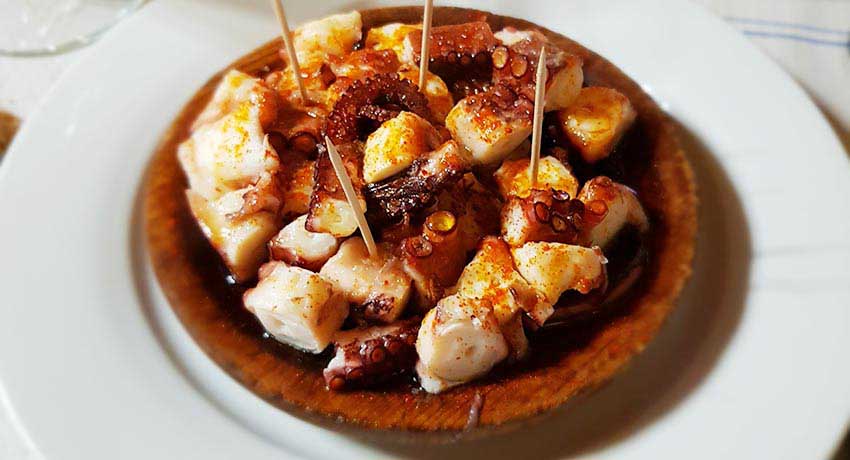
We provide a picnic lunch for the group on guided tours. This is a fun way to come together as a group, try typical Spanish food products and take a rest before finishing up. As our group doesn’t walk together, travelers stop in and leave when they want, but it normally works out that we all come together within 45 minutes of each other.
Dinner on the Camino is eaten earlier (7pm) than normally late Spanish dinner time (9-10pm). This is our large meal consisting of a 3-course dinner with wine and dessert. Starters on the Camino can range from fresh salads, to a soup or rice dish and each night they vary. The main course is a typical Galician specialty such as swordfish, steak and fries, or a vegetarian dish.
Travelers always have a choice of main dish and starter and orders can be customized. Dessert is always light, and could include fruit, flan, or yogurt. There are always local favorites to try and as a final bonus recommendation don't forget the five foods you must eat while walking the Camino.
Buen Camino!

